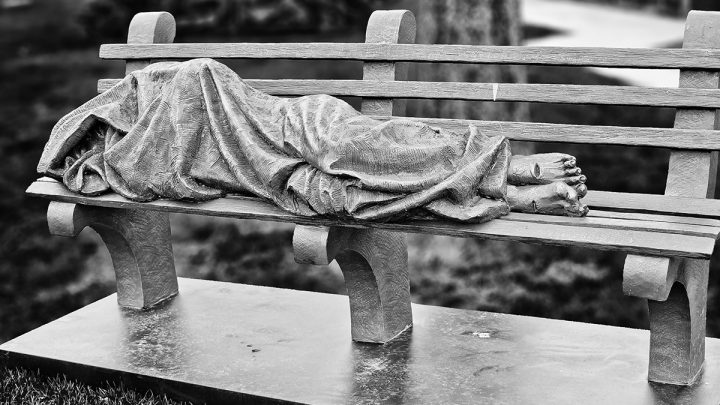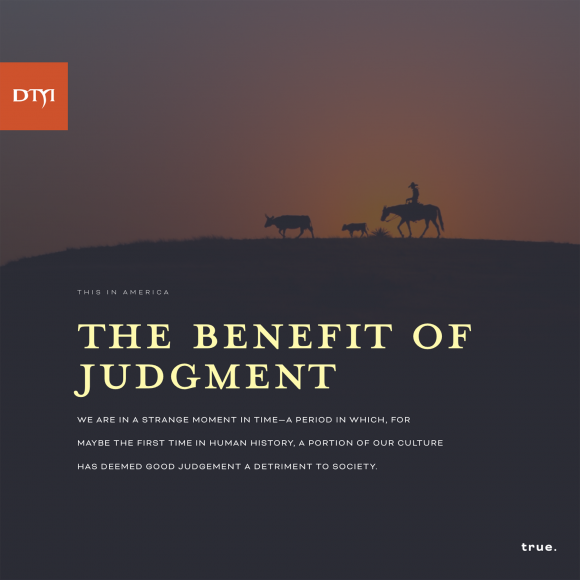
IN A COUNTRY THAT CLAIMS TO FEAR GOD, what sort of society have we created that allows someone to freeze to death outside, because there is no room for them at the inn
Sunday, February 14, 2021
In the 1990s, an SNL skit loosely titled “The Roxbury Guys” featured Will Ferrell and Chris Kattan, often with a guest host included, rocking their heads and dancing to the tune of “What Is Love” by Haddaway. It was popular enough as a skit to be spun into the unfortunate 1998 movie “Night at the Roxbury.”
“I give you my love, but you don’t care,” the song goes. “So what is right and what is wrong? Gimme a sign. What is love? Oh baby, don’t hurt me. Don’t hurt me, no more.”
The shiny suit-wearing, coke-sniffing duo, were quite taken with the act of finding ladies to dance with but didn’t seem to connect with them on any sort of emotional or intellectual level. Instead, they tended to be aggressively clueless and physically assaulting. Presumably, it was a quest to hook up with anyone who was willing. What it wasn’t, was love, at least by any common measure or cultural understanding. It wasn’t about the object of their obsession. It was about egocentric indulgence. What is love…baby don’t hurt me. It was about self-fulfillment.
The concept of love, within the framework of human history and culture, is, shall we say, complicated. Poets and artists have been depicting love, or at least the acts, complications, and results of love since we were able to do so. All religions contain some mention of love, in one form or another, and it appears central to understanding a fully-realized person.
“Being deeply loved by someone gives you strength, while loving someone deeply gives you courage.”
Lao Tzu
Within the Abrahamic religions, the Christian faith teaches that God is the source of all love and that the greatest commandment is that “thou shalt love the Lord thy God with all thy heart, and with all thy soul, and with all thy mind, and with all thy strength: this is the first commandment.” The second, “thou shalt love thy neighbor as thyself” was considered, along with the first, two greatest commandments by Jesus Christ himself.
One of the core commandments of Judaism is “Love your neighbor as yourself” and stands as the center of the central book in the Torah, while the Prophet Muhammad taught Muslims, “You will not enter paradise until you believe, and you will not believe until you love to the other Muslim what you love to your self.”
In Hinduism, love is a sacrament. It teaches that one gives up selfishness in love, not expecting anything in return. It also believes “God is love”. The sacred text of Kanda Guru Kavasa says, “For the thing which is everywhere is only love, and love is the only thing which is like a soul within us, love is Kumara, love is Kanda.” This means love is God.
Buddhists believe romantic or sensuous love (kama) to be an obstacle on the path to enlightenment, perceiving it as selfish. Karunā, on the other hand, is compassion and mercy, which reduces the suffering of others. It is complementary to wisdom and is necessary for enlightenment. Advesa and maitrī are benevolent love. This love is unconditional and requires considerable self-acceptance. The strongest motivation a Buddhist has in their path to enlightenment is the idea of unselfish love for others.
The ancient Greeks distinguished between three notions of love, which they defined as eros, philia and agape.
Eros, from which we get the word erotic, expressed the passionate desire for an object, typically a sexual passion or obsession.
Philia was considered more of a familial love towards friends, business associates, and even country. Philia was generally understood to be responsive to the good qualities we experienced, so Philia was a more conditional love. Philadelphia is sometimes called “the city of brotherly love” but it’s generally understood that the brotherhood does not extend very far outside of a typical sports television broadcast.
Agape, on the other hand, was considered the sort of love that does not respond to the value of its object. An unconditional love, if you will. This has been most often equated with the love of God. Rather than responding to antecedent value in its object, agape instead was thought to create value in its object and therefore to initiate our fellowship with God.
So eros was romantic love, mysterious and fleeting. Philia was conditional love, relying on the value a thing inherently contained, like the goodness of pizza, in order to manifest itself. Where agape was the only form of love that was unconditional, and the only kind that you received as a gift regardless of any intrinsic value.
In the Christian faith tradition (the only one I can speak to with any authority, and as I am no Biblical scholar, even that is going to be from a layperson’s perspective), agape is the love of God and is not only unearned, it’s unwarranted.
This is the concept of grace that love is given freely and without constraints to those who believe. This love is considered larger than life, in fact, larger than death. It is considered eternal, for God is love. He is the alpha and omega, the beginning and the end. God’s love is beyond human understanding and yet most easily understood by little children. It is unceasing and exists outside of our understanding of it. That’s what we are told.
Which brings me to the unresolved, and largely ignored, homeless crisis in Cape May County, the Republican Party’s insistence that they are the party of Christian values while ignoring any ethical responsibility to the powerless, and a $40,000 sculpture by a Canadian artist. Yeah, that was an abrupt turn for me too.
In 2015, a statue titled “Homeless Jesus” was erected on church property by Roberts Park United Methodist Church in Indianapolis, Indiana. It was controversial. People who thought it was real, called the police because they felt the person might be in distress. Others felt it made the area look bad, as if they might have real homeless people sleeping on benches and not just bronze statues.
“The important thing is to try and make visible and permanent what is often seen as invisible and transient,” said Pastor Andrew Holmes, who led the initiative to have the sculpture installed. “There are other ways that you could help than simply making some PB&J sandwiches and giving it to somebody.”
Proponents of the statue liked the idea of depicting Jesus, who was said to fraternize with those on the margins of society, and taught that his followers should care for the poor and sick. Accounts from the Bible describe both Jesus and his disciples as homeless and penniless themselves and supporters of the statue, say it speaks to the nature of the kingdom of heaven, as described in Matthew 25.
In this passage, Jesus is describing who will be welcomed into the kingdom of heaven and says, “For I was hungry, and you gave me something to eat; I was thirsty, and you gave me something drink; I was a stranger, and you took me in; Naked, and you clothed me; I was sick, and you visited me; I was in prison, and you came to me.”
Jesus continues, “Then shall the righteous answer him, saying, ‘Lord, when did we find you hungry and give you something to eat, or thirsty, and gave you something to drink? When were you a stranger, and we took you in; or naked, and we clothed you? When were you sick, or in prison, and came to you?”
The book concludes by saying, “And the King shall answer and say unto them, ‘Verily I say unto you, in as much as you have done for the very least of my brethren, you have done unto me.’”
According to the artist Timothy Schmalz’s website, “The ‘Homeless Jesus’ sculpture is a visual representation of Matthew 25. The sculpture suggests that Christ is with the most marginalized in our society. The Christ figure is shrouded in a blanket with His face covered with the only indication that the figure is Jesus being the visible wounds on the feet. The life-size version of the work provides enough room for someone to sit on the bench [at his feet] and is cast in bronze metal.”
Copies of the statue have been installed in over 75 cities around the world, including Dublin, Washington D.C., Singapore, New York, Belgium, Glasgow, Manchester, Rome, Israel, Madrid, Philadelphia, and even the Vatican where the pope blessed the statue.
“Look at the parable of the Good Samaritan,” says Richard Smith, business administrator for Roberts Park UMC. “Jesus related to folks like that. Often, you see a homeless person, you walk on the other side of the street. Maybe the piece is a little controversial, but it’s intended to invite discussion and raise awareness.”
From my perspective, illustrating the unconditional love of God in human form, by manifesting that image as both an all-powerful God, as well as the least of these, is not only poetic but powerful. But it still bothers me.
It bothers me because our local government refuses to address the problem, more than happy to let private charities bear the burden for society’s failure to care for its own. This Ayn Rand, boot-strap theology of punishing the poor and sick is a curse on all our heads and a despicable reaction to disastrous results of unfettered capitalism. This shouldn’t be political, but it is. It should be theological, but it’s not.
It’s been distorted as some evil, godless, socialist plot that will destroy American sovereignty and individual responsibility. It’s not only being presented as a threat to capitalism, but caused by soft, weak-hearted liberals willing to provide handouts to everyone who asks. Homelessness and mental illness are not a byproduct of greed, they argue, but caused by a lack of faith and piety.
Jesus tells another story in the Bible, this one about the Good Samaritan. Everyone knows this story because it illustrates the value of kindness and compassion. We are told this story as children because we believe it to be a good morality tale. In our minds, we are the Good Samaritan. We would be the one who stops and helps. We would be the generous one. We are, as always, the hero of our own epic tale.
What’s good to understand, is that in the telling of this story, Jesus was talking to his fellow Jews, and Samaritans at that time were beneath contempt. They were the worst sort of people one could imagine, at least in the eyes of the Israelites of the day. In today’s parlance, it would be like telling a story about the Good Nazi, or at least it would have if we weren’t flirting with white nationalism as a country again. But assuming you think Nazis are bad, the story would apply. The person you think least likely to help someone, not the teacher, preacher, or community leader. The nazi biker with all the tattoos. That’s the guy who stops and helps.
Jesus was laying down some pretty radical ideas that day. He was telling his own people that they were not loving their neighbor like they thought they were because they misunderstood who their neighbor was. In their minds, their neighbor was someone who looked like them and thought like them. Who went to their synagogue, prayed to their God, and lived by the same principles. Jesus told them their neighbor was a tattooed, Nazi biker and he was doing a lot more than they were.
In the book of Luke, Jesus expands on this saying, “If you love those who love you, what credit is that to you? Even sinners love those who love them. But love your enemies, do good to them, and lend to them without expecting to get anything back. Then your reward will be great, and you will be children of the Most High, because he is kind to the ungrateful and wicked. Be merciful, just as your Father is merciful.”
Our neighbor, in this context, is not the people we imagine them to be.
This idea is in no way exclusive to Christianity. In fact, other religions go further, putting great value on the idea of breaking bread with someone, the kindness of strangers, and the righteousness of hospitality.
How has so much of America, a country dominated by the Christian faith tradition, become so divorced from the concept of hospitality, grace, and unwarranted love? How did we become so selfish and greedy? How did we allow ourselves to believe that the purpose of life should be to amass as much personal wealth as possible? It’s enough to cause me to question all faith in any God.
“The hunger for love is much more difficult to remove than the hunger for bread.”
Saint Teresa of Calcutta
We find ourselves in precarious times and we are being asked to decide what we want from our country, what we expect from our countrymen, and who is our neighbor? Maybe it’s worth taking some time to consider the value of love, as part of our economic equation, and factor in empathy in our balance sheets. It can’t just all be about the money.
I’m still torn about the cost of the statue of homeless Jesus, even though I appreciate the symbolism behind it. The church should be leading the charge to call for more action on social issues, of caring for the undesirables in our midst. But they should not be going it alone.
We need to call on our government, at all levels, from the President to the mayor, to take care of our own people, especially our most vulnerable. They are elderly and children. They suffer from mental illness and bad luck. They are poor, but not always in spirit. They are the least of our brethren and we have been called to care for them.
Before we became so advanced technologically, and our culture became so complex, we never would have allowed a member of the village to starve to death, be abandoned or forgotten. We would have left no one behind. Everyone mattered. Everyone had a purpose.
How can it be progress, if it is now possible to leave someone outside to freeze to death while we watch television and eat popcorn?
Today is Valentine’s Day, a day when we are told to think about love. This usually is defined as romantic love, and that sells a lot of chocolates, greeting cards, and flowers. But maybe it’s time to think about a different kind of love, one where we care for the neighbor we do not love because that is the nature of God.
I don’t know how important it is to have a statue of Jesus sleeping on a park bench in North Wildwood. Maybe it will cause people to think differently about who our neighbor is. It’s worth noting that most of us wouldn’t like Jesus if he showed up on our doorstep this evening. He really would end up sleeping on a bench in Wildwood, because there would be no other shelter available to him. There is no room for him at the Inn. Because this is how we treat the least of our brethren. You can do better. I can do better.
In practical terms, Cape May County needs a full-time shelter that can house people in crisis. It needs to be tax-payer funded, and it needs to be around as long as we have a need. We also need more affordable housing options in the county. These are things we can do.
This might be the least that we can do.






